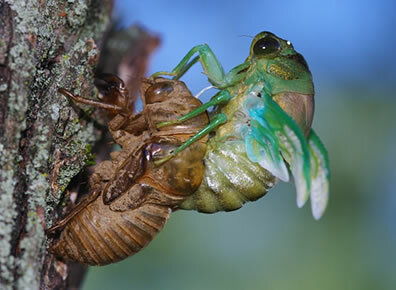THE otter It's an animal vertebrate, mammal and carnivore, and belongs to the family Mustelidae, the same family as the ferret. These animals are found in almost every region of the planet. In Brazil, there are two species, and both are at risk of extinction.
→ General features
As said, the otters are animals vertebrates, mammals and carnivores. Thus, they present some specific characteristics of the class Mammalia (mammals), like the body covered with hair. They have others related, for example, to their way of life, such as the presence of a stout tail that helps them in swimming. Otters spend much of their time in aquatic environment, being considered animals semiaquatic.
The following are some characteristics of otters:
They have an elongated and thin body that can reach, on average, 1.5 meters in length;
The body is covered by a dense, impermeable brown fur, varying between light and dark tones;
They have interdigital membranes, that is, membranes between the fingers that help them in swimming;
They have strong, sharp teeth, which contributes to their type of diet;
Otters are carnivorous animals and feed mainly on fish. However, small mammals may also be included in your diet, reptiles, amphibians and birds;
They have some very heightened senses, such as sight, hearing and smell.
Know more: classification of mammals
→ reproduction
The otter, as mentioned, spends much of its time in the aquatic environment. However, she always seeks live in places with less anthropic action, because you need a place to build your play, where, for example, you will have your puppies.
The gestation time of the otter varies among species. In each pregnancy, the number of puppies can also vary, however, there is an average of two puppies at a time.
Puppies are born blind and only open their eyes after the fourth week after birth, being, until then, dependent on the mother. They live with them until they are one year old.

The otter or neotropical otter inhabits the most diverse environments, from freshwater to marine.
→ Otter or Neotropical Otter (longicaudis otter)
The otter or neotropical otter has lived since freshwater environments, in regions of forests and even affected by anthropic action, even marine environments, as in the rocky shores. In addition to Brazil, it is also found in countries such as Bolivia, Venezuela, Mexico, Honduras, among others.
Yours food is also pretty varied, although its main food source is fish. The otter also feeds on insects, crustaceans, amphibians and molluscs. In addition, it can feed on other animals, in an opportunistic way, as long as they have a slow ability to escape.

The giant otter or giant otter usually lives in family groups of up to 15 individuals.
→ Giant otter or giant otter (Pteronura brasiliensis)
The giant otter or giant otter, unlike the neotropical otter, has a larger habitat selectivity, living mostly in freshwater environments and, preferably, with margins with gentle slopes and denser vegetation (so you can build your lair), as well as feeding abundant.
It mainly feeds on fish, which can also be consumed alligators and turtles, occasionally. In addition to Brazil, the giant otter is found in countries such as Bolivia, Venezuela, Peru, Paraguay, Colombia etc. The giant otter or giant otter usually lives in family groups with up to 15 individuals. To learn more about the otter, read: Otter: characteristics, food and curiosities.
→ Extinction
Currently all 13 species of otters require attention to their conservation state. This is due, among other factors, to the destruction of its habitat, with the destruction of the vegetation the banks of rivers, the damming of water bodies, etc.
In addition hunting, the pollution of waters and commerce of otters (mainly from some Asian species) as Pets (removing them from your habitat captivity) have led to a decline in populations of this animal.
Currently, the otter species that occur in Brazil,the neotropical otter and the giant otter, are classified, according to the Red List of Endangered Species, of the International Union for the Conservation of Nature and Natural Resources (IUCN), as almost threatened and endangered, respectively.
Read too: Endangered animals
→ Curiosities
 |
Did you know that every year in May is the International Day of the Otter? This day aims to make people aware of the importance of this animal and about the need to preserve the environment where he lives, in view of the risks he runs from extinction. |
Did you know that although they are being sold as pets, otters are not the most suitable animals for this purpose? Otters, in the wild, live in groups, and removing them from their environment can be quite harmful. Furthermore, otters need a special diet and vaccine and are not docile animals. |
Read too: Platypus


